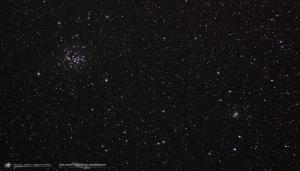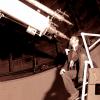Celebration of Space - February 2, 2024
Today, Friday, February 2, 2024 is Groundhog Day. Many people associate this day with the humorous story of a groundhog in Pennsylvania emerging to see its shadow or not. But Groundhog Day is actually an astronomical occurrence. It is one of the four cross quarter days of the year. Cross quarter days mark the halfway point between solstices and equinox. As of today, we are officially on the down stroke, or second half of winter. The Vernal Equinox will occur on March 19, 2024 ET, and will mark the first day of the spring season in the Northern Hemisphere. Other cross quarter days of the year include May Day in May, Lammas in August, and Halloween in October. So take a bit of solace that the winter is coming to a close, and springtime blooms are just around the corner.
As we move into the second half of winter, the wintertime sky is putting on quite a show, with the constellation Orion always claiming the majority of attention. But springtime constellations have begun to rise in the eastern sky earlier in the night, and many springtime celestial objects are becoming visible. One such object is Messier 44 – The Beehive Cluster (M44).
M44, which historically was referred to as Praesepe, is a naked eye visible open star cluster that resides at the center of the constellation Cancer. The cluster contains upwards of 1,000 stars that are all held together by their gravity. Residing at 610 light years distant, M44 is one of the closer open star clusters to the Solar System. Naked eye visibility comes down to where you are observing from, and if the Moon is present or not. Unfortunately, the cluster will not be visible from most light polluted areas, and the bright light of the Moon, near the full lunar phase, will outshine the cluster as well. Though from areas where it is visible, it will appear as a small cloud in the sky.
It is rumored that the Beehive Cluster was considered an indicator of coming weather. If you could see it, then tomorrow would have favorable weather. Regardless of the cluster’s weather predicting capabilities, it is a beautiful sight in binoculars. To catch a view this time of year, set out to a dark location during a time that the Moon is not out, and the sky is cloud free. Being that the cluster resides in Cancer, which is a zodiacal constellation, the cluster will reside along the ecliptic (the path the Sun takes across the sky), which will make it easy to find. Currently, the cluster will be visible at 11:00 pm while facing due south and looking up about 67°. Now that the Moon is departing the night sky as it progresses towards next Friday’s new Moon, the view should be spectacular. That is if clouds give us a break. Let us know if you happen to spot the Beehive Cluster in the sky.
This weekend the International Space Station (ISS) will wrap up visible evening passes over our region for the current pass cycle. Even though it has been cloudy for over a week now in Southern New England, we have some clear sky conditions on the radar for the weekend, which will allow for ISS sighting opportunities. Here are a few notable passes for the coming evenings:
Fri, Feb 2 at 6:22 pm, starting in the WNW, rising to 34°, heading towards the SSE
Sat, Feb 3 at 5:34 pm, starting in the WNW, rising to 60°, heading towards the SE ← Awesome pass!
Mon, Feb 5 at 5:35 pm, starting in the W, rising to 21°, heading towards the S
Once the ISS departs the evening sky, morning pass sightings will kick in on February 13th. Starting March 12th, the station will return to the evening sky to close out the winter season. Note that the pass times listed here are applicable to Southern New England, but are generally acceptable for the entire Northeast region. For daily pass times of the ISS and other bright satellites, visit the Frosty Drew Daily Satellite Pass Prediction Utility.
- Author:
- Scott MacNeill
- Entry Date:
- Feb 2, 2024
- Published Under:
- Scott MacNeill's Columns




